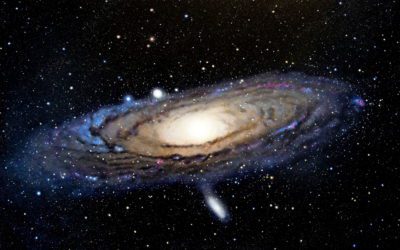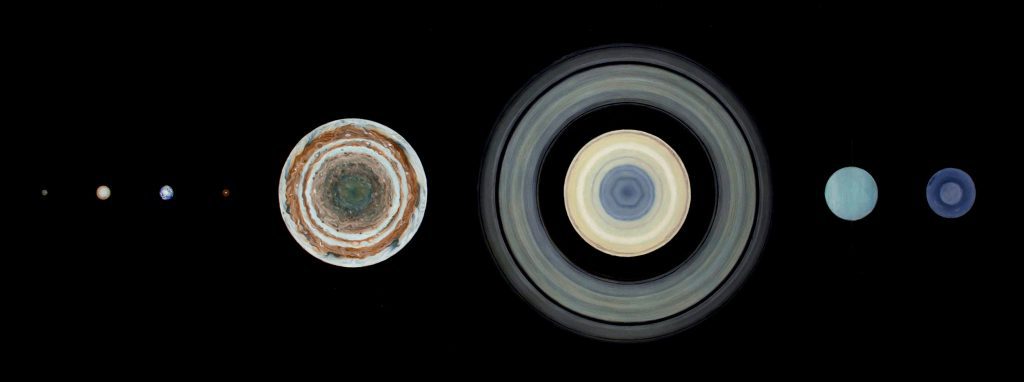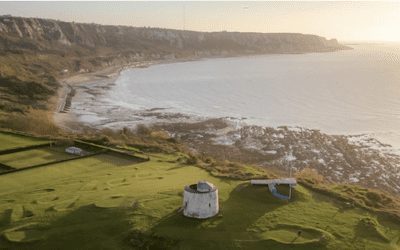Mark Batty’s work is influenced by astronomy and the cosmos. As well as an awestruck admiration of beauty, this subject matter serves as a point of personal scientific research, and it is at this amalgamation that his practise exists.
Batty aims to produce a natural representation of the cosmos, however due to the nature of space, the result can often seem free of reference and subject matter, blurring the line between representation and abstraction. Touching on the sublime and magisterial gaze, which shape our very notions of the cosmos, his works evoke exploration and the frontier. He aims to present the viewer with a universe that is both overwhelming and within our grasp.
Batty exploits the versatility of oil paint in representing different areas of space. From numerous thin dark layers for the eternal expanse of nothingness to the myriad of bright white specs for dense congested star fields; coloured glazes for translucent nebulous clouds and buttery slathers of rolling stormy cloud bands on giant gaseous planets. His works encompass striking and familiar representations of space as well as the more abstract inscrutable realms.
Otherside (2020)
“This piece was painted at home (Surrey, UK) in a small space converted into a studio during the first lockdown.
It is part of my ongoing ’Terrestrial Pigment’ series in which I use rocks relevant to each planet or moon, grinding them into pigment to make paint. As with my previous moon painting (depicting the familiar face we see from Earth), I have used anorthosite to make the paint. Anorthosite is found across the lunar highlands and was in the samples brought back from the Apollo missions. After the success of the first lunar painting, it seemed appropriate to paint the mysterious far side that is always facing away from us.
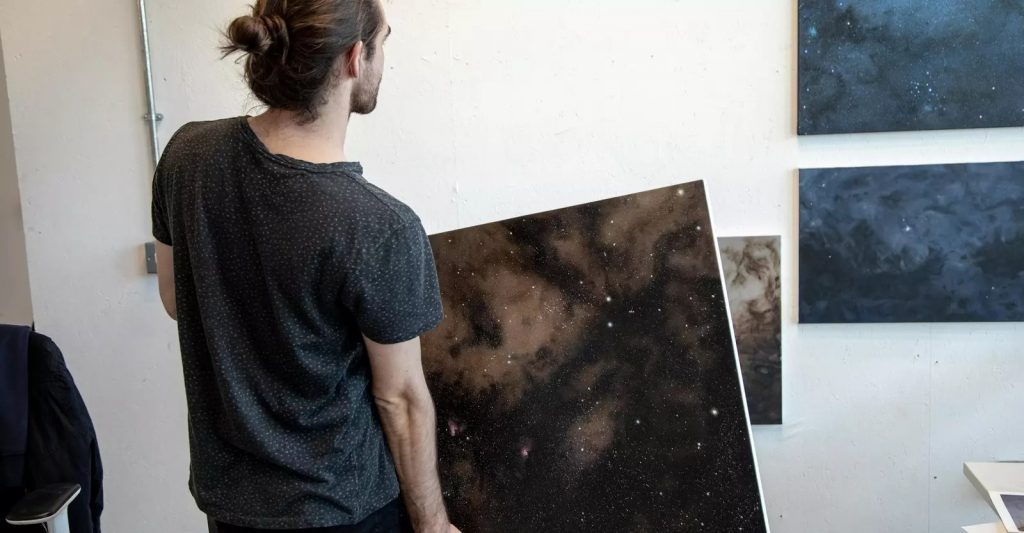
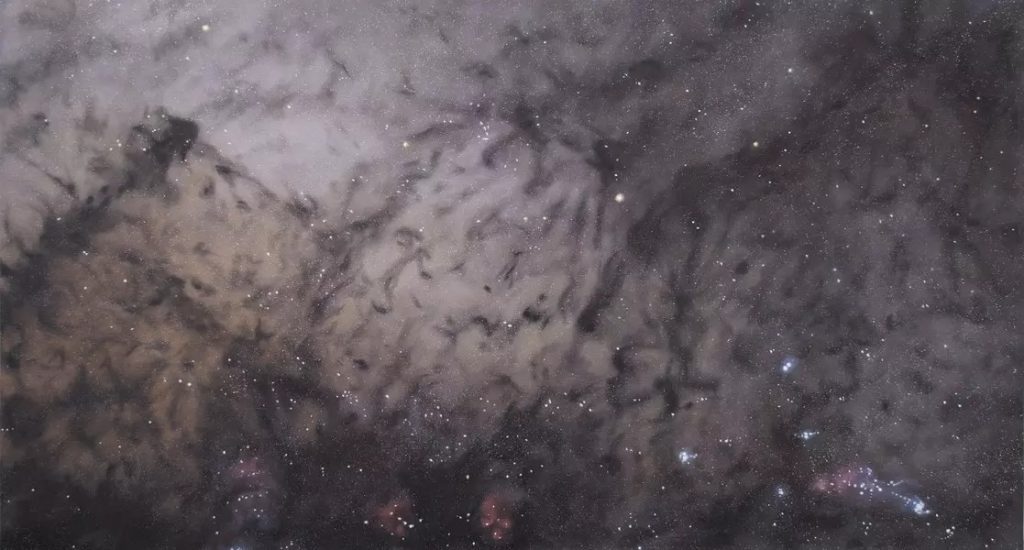
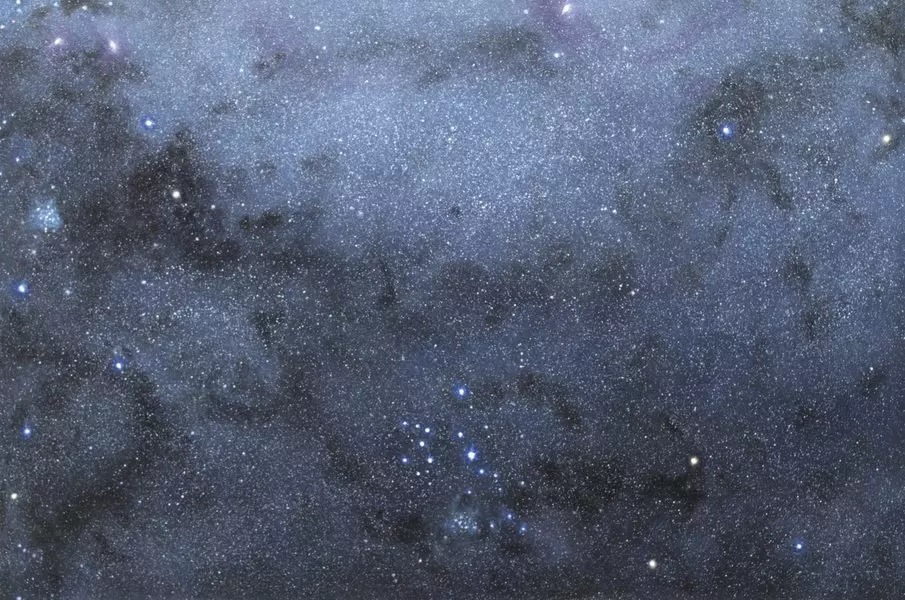

From previous paintings I knew how well the colour of the anorthosite paint worked for the moon, but this time I wanted to elevate it using different oils and application techniques to create a much more textured surface. I used a delicate impasto technique to highlight the heavily cratered surface.

I wanted to illuminate the dark side of the moon. We never get to see the far side as the moon is tidally locked to the Earth. However, half of the moon is always illuminated by the sun so just as we see a full moon roughly once a month, the opposite far side is fully illuminated once in that time too. When we experience a ‘new moon’ the opposite side is fully illuminated.” – Mark Batty, 2020.
Residencies
2020 Anderson Gallery Studio Residency, London
Selected Shows
May 2019 From the Studio Floor, Cambridge
Mar 2018 From the Studio Floor, Cambridge
Mar 2018 Captive State, 177 Hoxton, London
Nov 2016 48 Hours, DegreeArt, London



